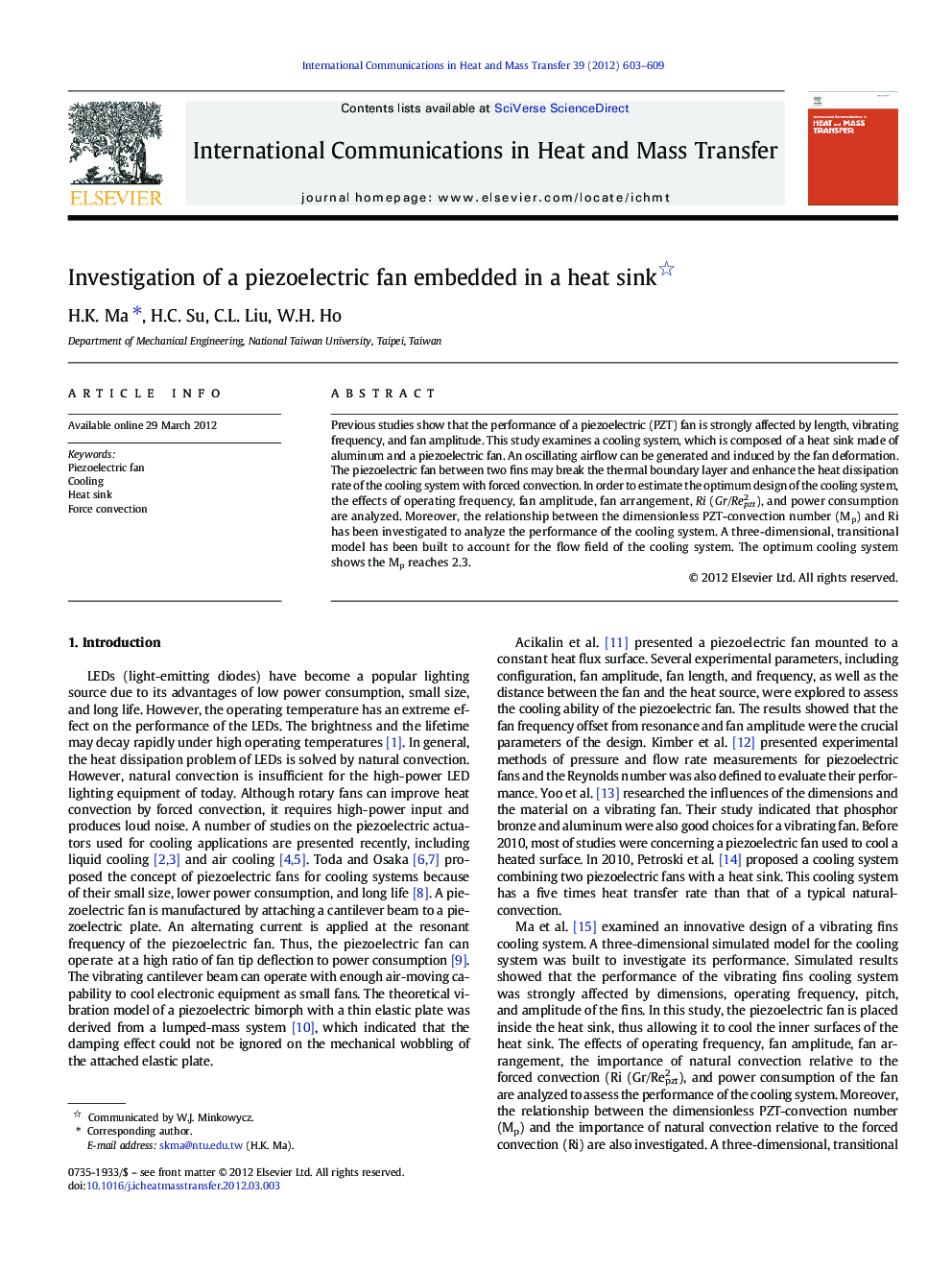| Article ID | Journal | Published Year | Pages | File Type |
|---|---|---|---|---|
| 653751 | International Communications in Heat and Mass Transfer | 2012 | 7 Pages |
Previous studies show that the performance of a piezoelectric (PZT) fan is strongly affected by length, vibrating frequency, and fan amplitude. This study examines a cooling system, which is composed of a heat sink made of aluminum and a piezoelectric fan. An oscillating airflow can be generated and induced by the fan deformation. The piezoelectric fan between two fins may break the thermal boundary layer and enhance the heat dissipation rate of the cooling system with forced convection. In order to estimate the optimum design of the cooling system, the effects of operating frequency, fan amplitude, fan arrangement, Ri (Gr/Repzt2), and power consumption are analyzed. Moreover, the relationship between the dimensionless PZT-convection number (Mp) and Ri has been investigated to analyze the performance of the cooling system. A three-dimensional, transitional model has been built to account for the flow field of the cooling system. The optimum cooling system shows the Mp reaches 2.3.
